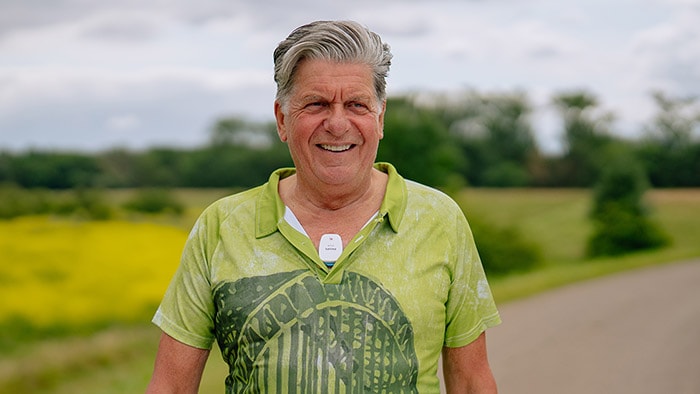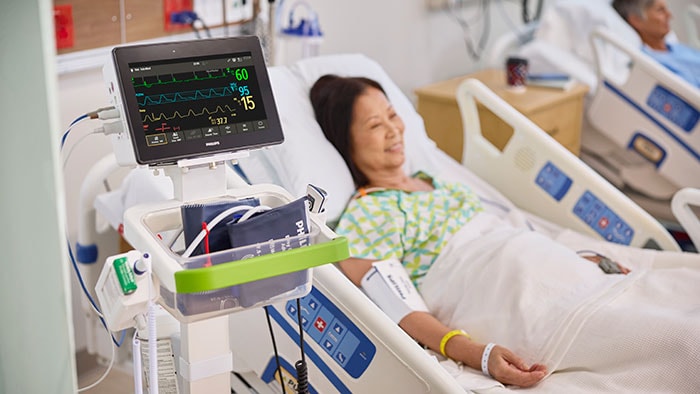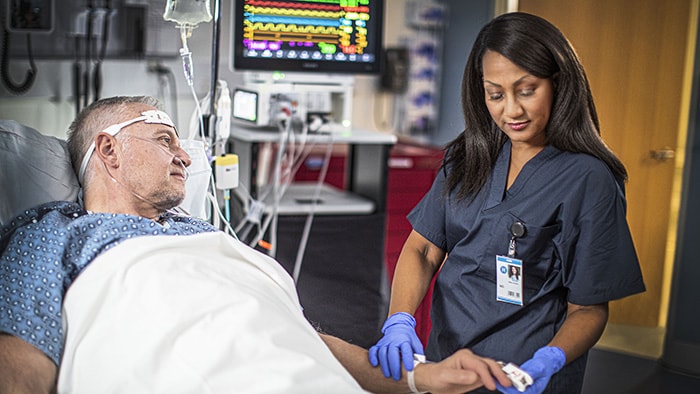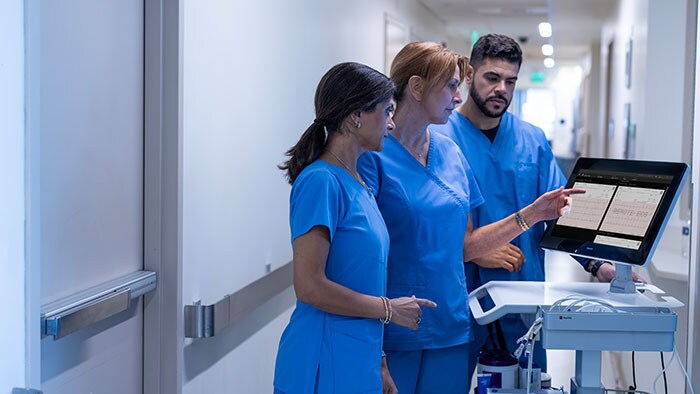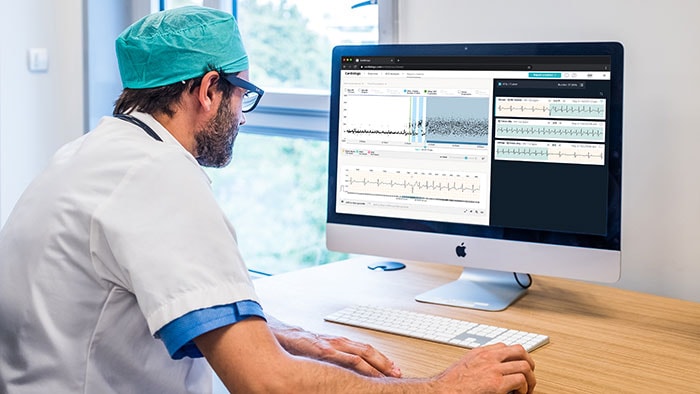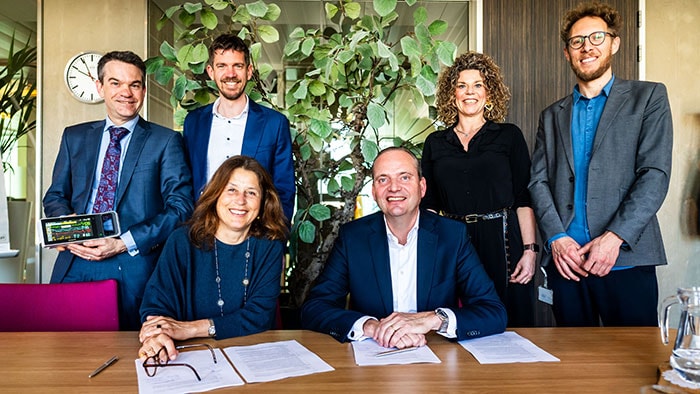Elk medisch apparaat dezelfde taal: hoe Service-oriented Device Connectivity als volgende stap de zorg in ziekenhuizen kan verbeteren
apr 08, 2025 | 3 minuten leestijd
Een nieuwe, internationale standaard waardoor medische apparaten in het ziekenhuis beter met elkaar kunnen samenwerken, ongeacht van welke leverancier het apparaat komt. Dat is waar de nieuwe Service-oriented Device Connectivity (SDC) om draait. Rob de Bie, business development leader bij Philips en expert op het gebied van medische connectiviteit, sprak op 1 april tijdens de Hospital Patient Monitoring (HPM) Gebruikersdag over de toekomst van interoperabiliteit in de gezondheidszorg, waarbij samenwerken met partners cruciaal is.
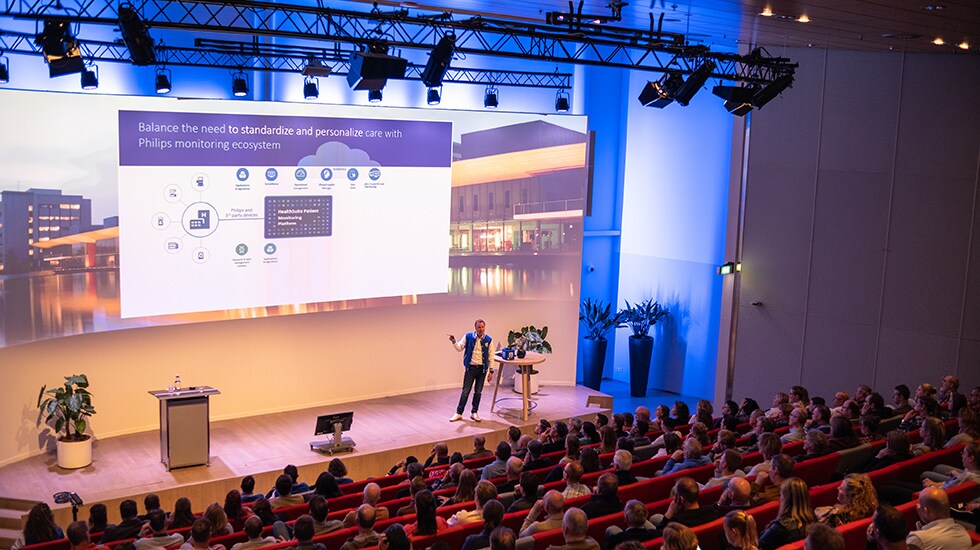
Complexe zorgprocessen
De gezondheidszorg staat voor een aantal grote uitdagingen. Denk daarbij aan een sterk vergrijzende bevolking, toenemende personeelstekorten en patiënten met steeds complexere zorgbehoeften. “De afgelopen 70 jaar leven we gemiddeld 15 jaar langer. Dat is vooral te danken aan preventieve zorg, maar het betekent ook dat we steeds vaker patiënten zien met meerdere chronische aandoeningen tegelijkertijd, zoals diabetes en hartfalen”, zegt Rob. “Zorgprocessen worden steeds complexer, terwijl we de zorgprofessional juist willen ondersteunen om de beste zorg te kunnen leveren aan de patiënt.”
Een dialoog tussen apparaten
Een belangrijke stap om deze uitdaging aan te pakken ligt volgens Rob in betere connectiviteit en samenwerking tussen medische apparaten. Nu communiceren veel apparaten nog via gesloten systemen, wat leidt tot inefficiëntie en veiligheidsrisico's. “Op dit moment voeren apparaten vooral een monoloog. Wij willen ze met elkaar laten praten, zodat processen veiliger en efficiënter worden”, legt hij uit. “En dus is het nodig dat de apparaten een dialoog kunnen voeren met elkaar. Het is dus de bedoeling dat ieder apparaat dezelfde taal met elkaar spreekt, om elkaar te kunnen begrijpen.”
Samenwerking tussen leveranciers
Daar moet het nieuwe protocol Service-oriented Device Connectivity (SDC) verandering in brengen. De internationale standaard komt vanaf 2026 beschikbaar en zorgt ervoor dat apparatuur van verschillende fabrikanten op dezelfde manier met elkaar kan communiceren. “Met één gemeenschappelijke taal kunnen zorgverleners straks meerdere apparaten vanuit één punt bedienen, zoals via hun smartphone. Dit creëert één centrale bron van waarheid en dat vermindert de complexiteit voor zorgprofessionals”, zegt Rob. Hij benadrukt dat de standaard een eerste stap is, want alleen met elkaar kunnen praten is niet voldoende. “De echte waarde van het communicatieprotocol zit in een goede samenwerking tussen leveranciers.” Dit is noodzakelijk om een vergaande integratie en bediening mogelijk te maken.
Waardevolle partnerships
En daar komt de kracht van Philips duidelijk naar voren. Het gezondheidstechnologiebedrijf streeft naar een open ecosysteem en werkt reeds samen met de andere partners uit het ecosysteem om van SDC een succes te maken. Philips wil ziekenhuizen, algoritme ontwikkelaars en onderzoeksinstellingen de mogelijkheid geven om ook eigen algoritmes te ontwikkelen en toe te passen op de gedeelde data. Rob: “Ons onderscheidend vermogen zit in onze waardevolle partnerships. Philips ontsluit enorm veel waardevolle data. Door deze toegankelijker te maken voor andere partijen, vergroten we de kracht van innovatie enorm en kunnen we artsen, verpleegkundigen en ondersteunende diensten zoals Biomedische techniek en IT nog beter ondersteunen.”
Zorgverleners optimaal ondersteunen
In de gezondheidszorg staat patiëntveiligheid centraal en fouten kunnen verstrekkende gevolgen hebben. “We gaan eerst kruipen, voordat we gaan lopen”, zegt Rob beeldend over de uitrol. De gezamenlijke taal is het begin, maar het uiteindelijke doel is een ‘Smart Healing Environment’ waarin geavanceerde technologie zorgverleners optimaal ondersteunt en de zorgervaring voor patiënten wordt geoptimaliseerd. Rob: “Techniek is daarin ‘slechts’ de enabler, de absolute meerwaarde zit hem in het partnerschap tussen tech-bedrijven en de ziekenhuizen om ook daadwerkelijk de werkprocessen te kunnen optimaliseren.”
Tijd winnen
Dat doel kan worden bereikt met het inzetten van data en technologie, maar daar ligt volgens Rob een belangrijke rol voor de zorgprofessional. “De echte waarde van technologie ontstaat namelijk alleen als zorgprocessen daadwerkelijk worden verbeterd.” De zorg moet worden overtuigd van de waarde van technologie en wat het kan betekenen. “Een van het meest kostbare bezit in de zorg is tijd. We begeleiden ziekenhuizen graag, zodat we ook samen kunnen leren hoe we die tijd kunnen winnen door technologie. Degene die het beste weet hoe ze hun tijd beter kunnen benutten, zijn verpleegkundigen en artsen zelf. Als zij deze technologie omarmen en betekenis kunnen geven, kunnen we gezamenlijk écht het verschil maken.”
Over SDC
Service-oriented Device Connectivity (SDC) is een internationale communicatiestandaard waarmee medische apparaten van verschillende fabrikanten veilig en efficiënt met elkaar kunnen communiceren. SDC is ontstaan uit een samenwerking tussen medische technologiebedrijven en onderzoeksinstituten, onder leiding van het Duitse OR.NET-consortium. Sinds 2018 is SDC officieel erkend als standaard door de IEEE (11073 SDC). Philips speelt vanaf het begin een leidende rol bij de ontwikkeling en implementatie van deze technologie, waarbij het bedrijf actief samenwerkt met ziekenhuizen en industriepartners om interoperabiliteit in de zorg wereldwijd te verbeteren.
Every medical device speaking the same language: how service-oriented device connectivity can improve hospital care
A new international standard that enables medical devices in hospitals to better communicate with each other, regardless of the manufacturer. That is what Service-oriented Device Connectivity (SDC) is all about. Rob de Bie, Business Development Leader at Philips and expert in medical connectivity, spoke on April 1st at the Hospital Patient Monitoring (HPM) User Day about the future of interoperability in healthcare, highlighting the crucial role of collaboration with partners.

Complex care processes
Healthcare is facing several major challenges. Consider the rapidly aging population, growing staff shortages, and patients with increasingly complex healthcare needs. “Over the past 70 years, our life expectancy has increased by an average of 15 years. This is mainly due to preventive care, but it also means that we are seeing more patients with multiple chronic conditions such as diabetes and heart failure,” says Rob. “Care processes are becoming more complex, while we aim to support healthcare professionals in delivering the best possible care to patients.”
A dialogue between devices
According to Rob, a key step in addressing this challenge lies in improving connectivity and collaboration between medical devices. Currently, many devices still operate in closed systems, leading to inefficiencies and safety risks. “Right now, devices are mostly having a monologue. We want them to start talking to each other so processes become safer and more efficient,” he explains. “That means devices need to be able to have a dialogue – they must speak the same language in order to understand one another.”
Collaboration between vendors
The new Service-oriented Device Connectivity (SDC) protocol aims to change this. This international standard, set to be available from 2026, will allow equipment from different manufacturers to communicate in the same way. “With one common language, care providers will soon be able to control multiple devices from a single point – such as their smartphone. This creates one central source of truth and reduces complexity for healthcare professionals,” says Rob. He emphasizes that the standard is just the first step – communication alone is not enough. “The real value of the protocol lies in good collaboration between vendors,” he says. This is essential for enabling deep integration and control.
Valuable partnerships
This is where Philips’ strength becomes clear. The health technology company is committed to an open ecosystem and already works with other partners in the ecosystem to make SDC a success. Philips aims to empower hospitals, algorithm developers and research institutes to create and apply their own algorithms to shared data. Rob: “Our differentiating power lies in our valuable partnerships. Philips unlocks an enormous amount of valuable data. By making this more accessible to others, we significantly boost the power of innovation and can better support doctors, nurses and support services like Biomedical Engineering and IT.”
Optimally supporting care providers
In healthcare, patient safety is paramount and errors can have serious consequences. “We need to crawl before we walk,” says Rob about the rollout. The shared language is the beginning, but the ultimate goal is a “Smart Healing Environment” where advanced technology fully supports healthcare providers and enhances the patient experience. Rob: “Technology is ‘just’ the enabler. The real value lies in the partnership between tech companies and hospitals to truly optimize workflows.”
Saving time
That goal can be achieved through the use of data and technology, but Rob believes healthcare professionals play a key role. “The real value of technology only emerges when care processes are genuinely improved.” The healthcare sector must be convinced of the value of technology and what it can deliver. “One of the most valuable assets in healthcare is time. We are happy to guide hospitals so that we can learn together how to save time through technology. The people who know best how to make the most of their time are the nurses and doctors themselves. If they embrace this technology and can give it meaning, we can truly make a difference together.”
About SDC
Service-oriented Device Connectivity (SDC) is an international communication standard that allows medical devices from different manufacturers to communicate securely and efficiently. SDC was developed through a collaboration between medical technology companies and research institutes, led by the German OR.NET consortium. Since 2018, SDC has been officially recognized as a standard by the IEEE (11073 SDC). Philips has played a leading role in the development and implementation of this technology from the beginning, actively working with hospitals and industry partners to improve interoperability in healthcare worldwide.


